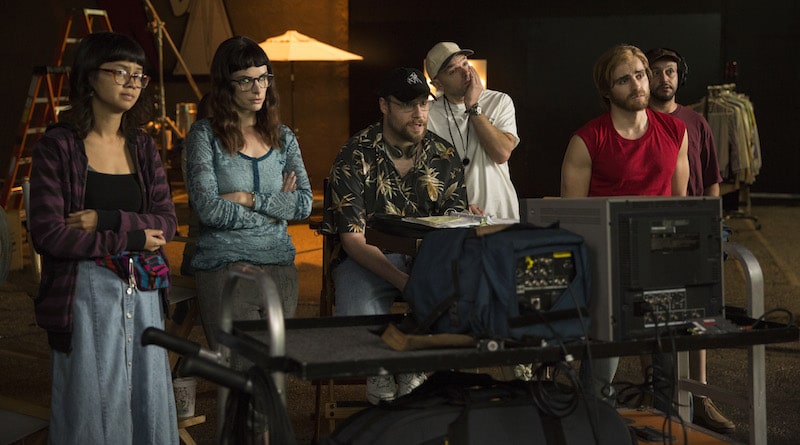
In Hollywood, the director gets all the credit, but somebody has to shoot the picture. In the case of the notorious cult movie The Room, it took four. The Disaster Artist combines them all into one, played by Paul Scheer.
Though named Raphael, Raphael Smadja was only one cinematographer who tried to teach Tommy Wiseau how to shoot a movie.
“He was fired,” Scheer said. “I’m an amalgam because Raphael was fired early on. I think there were about four DPs on the film. The last DP that’s credited I think is the DP, some version of that. There were many Raphaels.”
Scheer does capture the animosity of four frustrated artists and technicians dealing with a newbie. When Wiseau (James Franco) gets abusive, Raphael puts his foot down.
Wiseau’s behind the scenes footage gave Scheer the key to their interaction.

“Tommy was giving my character direction and my character wasn’t making eye contact with him, just going, ‘Yeah, yeah, yeah, yeah, yeah,’” Scheer said. “I was like oh, that’s it.”
One of the wild stories from The Room is that Wiseau shot the film in both 35mm and HD digital. He actually slapped two cameras side by side to shoot every scene.
So did The Disaster Artist, though they did not waste 35mm film, now a rarity in the industry.
“Both cameras were always functioning,” Scheer said. “There was no film in them but they were both functioning. You could look through the lenses and we had monitors. Everything was being fed right to the monitors. You’d watch them.”
As an actor himself, Scheer knew a bit of what directors of photography do on the set.
“The DP is your lynchpin,” Scheer said. “When I’m directing, my DP is my savior. I would just steal stuff from my own experience of that. It’s complicated lighting stuff essentially. Just the way they watch the monitor and how they’re looking and what they’re tweaking throughout. It was just a bunch of inside jokes for me of my favorite DPs.”
Ultimately, Wiseau paid the DPs to do it his way, even though they knew it was wrong.
“They almost have the harder job because they’re watching the train wreck,” Scheer said. “The people in the movie are on the train.”
Scheer is also a fan of The Room. Being in The Disaster Artist gave him a chance to relive the greatest moments from the cult film.

“The scene that people would probably think is the most unbelievable but is truly something that happened is the ‘Oh hi, Mark,’” Scheer said. “I believe in the book it took over two days to shoot that. It was not only hilarious to do but even in doing it in a comedic way, it was exhausting to do it over and over again. James came out with all these different ways of doing it.”
In one take that did not make it into The Disaster Artist, Franco played up Wiseau’s exhaustion.
“There was one where the door opened up and Franco was just lying there on the floor as Tommy, just exhausted by his own inability to deliver the lines,” screenwriter Michael Weber said.
Another notorious aspect of The Room are its love scenes. In recreating them, Franco played Tommy fully naked, wearing a flesh colored sock over his privates. Franco directed The Disaster Artist, so would be giving directions in the nude.
“I have a big scene where I’m fighting with him in that d*** sock,” Scheer said. “I love that my big moment with James is him being completely naked.”

The love scenes in The Room are uncomfortable, and Wiseau cuts back to on later in the movie.
“In the film you can really see, we recreated those sex scenes as best we could and as awkward as we could, ass cheeks opening and closing and all,” Scheer said. “It makes you understand the art of shooting a sex scene is something that is very delicate.”
Perhaps The Disaster Artist can serve as a lesson to other filmmakers on how not to shoot a love scene.
“When you see someone going in there just being like, ‘We’re going shoot it like this,’ it gives you an appreciation for every sex scene that you’ve ever seen, because it’s so much better than that,” Scheer said.
The Disaster Artist opens wide December 8.